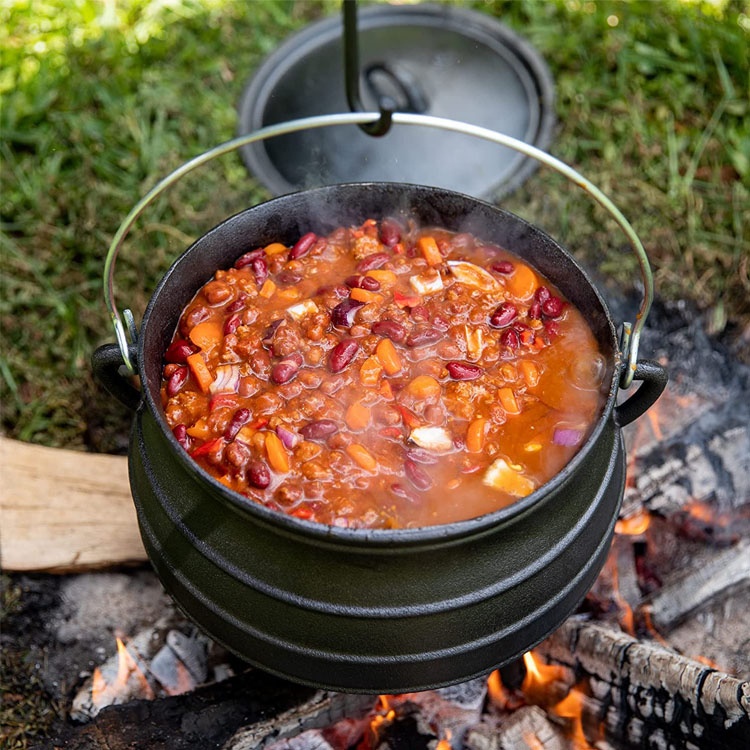
enameled cast iron versus cast iron
Enamelled Cast Iron vs. Cast Iron A Comprehensive Comparison
Cast iron has been a trusted material in kitchens for centuries, known for its durability, heat retention, and versatility. However, with the advent of enamelled cast iron, cooks now have more options to consider in their cookware choices. This article delves into the differences between enamelled cast iron and traditional cast iron, exploring their advantages and disadvantages to help you make an informed decision.
Composition and Coating
At the most fundamental level, both enamelled cast iron and traditional cast iron are made from the same base material iron alloy. The key difference lies in the enamel coating found on enamelled cast iron cookware. This coating consists of a layer of glass that is fused to the metal surface at high temperatures. This glossy finish adds a variety of colors and designs, making enamelled cast iron aesthetically pleasing. On the other hand, traditional cast iron is usually bare metal and requires a process called seasoning; this involves applying oil to create a non-stick surface and prevent rust.
Heat Retention and Distribution
Both cast iron and enamelled cast iron excel in heat retention and distribution. They can withstand high temperatures and distribute heat evenly, making them ideal for various cooking methods, including frying, baking, and slow cooking. However, enamelled cast iron has the advantage of being able to heat up more quickly due to its smooth surface and glassy layer. This feature makes it more responsive to temperature changes, allowing for precise cooking control.
Maintenance and Care
One of the most significant differences between the two types lies in their maintenance. Traditional cast iron requires more care, as it can rust if not properly seasoned and maintained. It is essential to avoid soaking it in water, using soap, or putting it in the dishwasher. In contrast, enamelled cast iron is relatively low-maintenance. It can be cleaned easily with soap and water and is usually dishwasher-safe, making it more convenient for modern kitchens.
enameled cast iron versus cast iron

Cooking Versatility
Enamelled cast iron offers greater versatility regarding cooking techniques. The smooth, non-reactive surface of the enamel allows for cooking acidic foods, such as tomatoes and citrus-based dishes, without the risk of a metallic taste affecting the dish. Traditional cast iron can react with such foods, altering flavors and sometimes leading to a metallic aftertaste. This feature allows enamelled cast iron to be more versatile for various recipes.
Aesthetics
While functionality is a major consideration, aesthetics also plays a role in the kitchen. Enamelled cast iron cookware comes in various colors and designs, allowing it to double as a serving piece during meals. This attractive presentation can enhance the dining experience and complement a well-set table. Traditional cast iron, while classic and functional, does not offer the same visual appeal.
Price Point
Enamelled cast iron tends to be more expensive than traditional cast iron. The manufacturing process, which includes the high-temperature fusing of enamel, adds to its cost. However, many consider the investment worthwhile due to the aesthetic appeal and ease of maintenance. Traditional cast iron, while usually less expensive, may require more time and effort to maintain.
Conclusion
Both enamelled cast iron and traditional cast iron have their unique advantages and drawbacks. Enamelled cast iron is ideal for those who prioritize ease of maintenance, aesthetic appeal, and versatility in cooking. In contrast, traditional cast iron suits cooks who appreciate the rustic charm and are willing to invest time in maintaining their cookware. Ultimately, the choice between enamelled cast iron and traditional cast iron will depend on your cooking habits, aesthetic preferences, and willingness to engage in upkeep. Whichever you choose, both types of cookware promise to deliver delicious meals and lasting performance in the kitchen.
-
Season Cast Iron Perfectly with GPT-4 Turbo TipsNewsAug.01,2025
-
High Quality Cast Iron Cookware - Baixiang County Zhongda MachineryNewsAug.01,2025
-
Premium Cast Iron Pan: Durable & Perfect HeatNewsAug.01,2025
-
High Quality Kitchen Durable Black Round Cast Iron Cookware Pancake Crepe Pan-Baixiang County Zhongda Machinery Manufacturing Co., Ltd.NewsAug.01,2025
-
Cast Iron Cookware - Baixiang County Zhongda Machinery | Nonstick, Heat ResistanceNewsAug.01,2025
-
High Quality Kitchen Durable Black Round Cast Iron Cookware - Baixiang County Zhongda Machinery | Non-Stick, Heat Retention, DurableNewsJul.31,2025


